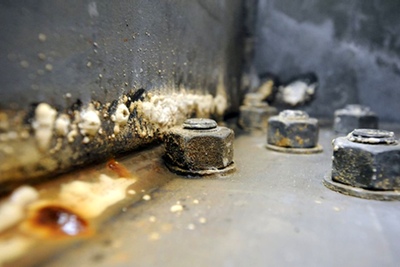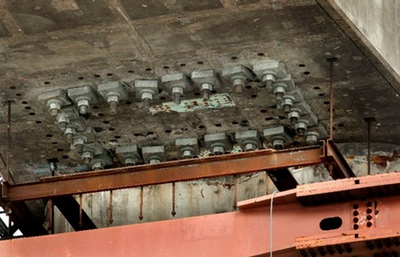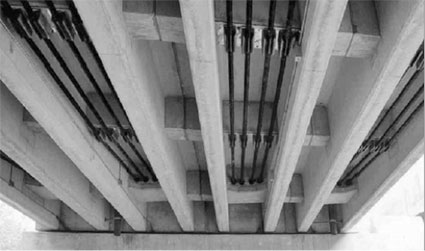†New Bay Bridge Faces Corrosion Challenges: Safety Concerns Emerge The iconic new Bay Bridge connecting Oakland and San Francisco has been grappling with structural issues since initial signs of corrosion surfaced in 2011. Even though the bridge opened in 2013 and was designed to last 150 years, it is now showing early signs of potential instability, raising serious safety concerns. This $6.5 billion suspension bridge is renowned for its distinctive design, featuring a single cable made up of 137 steel strands, which supports the bridge via an impressive tower. The cable, located on the bridge’s eastern side, is housed in protective chambers meant to shield it from corrosive elements like water and salty marine air. However, recent inspections have revealed visible rust on the cable's rods and strands inside one of these chambers, threatening the bridge's expected service life. Tests conducted in laboratories have confirmed the presence of corrosion, indicating significant risks of structural damage far earlier than anticipated. Persistent problems, such as water seeping into the chambers, are worsening the situation. An important discovery was made earlier this month when it was found that most of the 423 steel rods anchoring the bridge's tower to its base were submerged in water due to insufficient grout filling in their protective sleeves. Approximately 95% of these rods had around 1 to 2 inches of water, and 17 rods were not properly filled. Determining the source of the water remains elusive, but it is suspected that bay water might be infiltrating the system. Efforts to prevent and repair corrosion are expected to cost toll payers more than $25 million, with an additional $20 million allocated for assessing the risk of further failures similar to the 32 rods that snapped in 2013. Possible solutions include sealing the chambers effectively, drying the cable strands with hot, dry air to eliminate residual moisture, and potentially replacing some of the affected rods to stop the corrosion process. Bridge engineers are also considering the use of non-corrosive carbon fiber rods and cables to enhance the durability of structures. These carbon fiber components, which are ten times stronger than steel, resist oxygen, water, and chemicals, making them a promising option for both construction and repair work. The challenges facing the Bay Bridge highlight the importance of advanced materials like carbon fiber in ensuring the longevity and safety of vital infrastructure projects. ††††††As the Bay Bridge continues to face these corrosion-related challenges, there is growing recognition of the need for proactive maintenance strategies. Engineers are advocating for regular monitoring and inspection programs to catch issues before they escalate. Additionally, integrating cutting-edge technologies such as drones and sensors can provide real-time data on the bridge's condition, allowing for timely interventions. Public awareness and transparency are crucial in addressing these concerns. City officials and transportation agencies must engage with communities to explain the steps being taken to safeguard the bridge's future. Collaborative efforts between government bodies, private contractors, and academic institutions can lead to innovative solutions that enhance the resilience of infrastructure systems. Moreover, lessons learned from the Bay Bridge experience can inform future construction projects. By prioritizing the use of durable materials and implementing robust preventive measures, we can build structures that withstand the test of time while ensuring public safety. The Bay Bridge serves as a reminder of the delicate balance between cost efficiency and long-term reliability in large-scale infrastructure development. In conclusion, while the Bay Bridge faces significant corrosion challenges, it also presents an opportunity to adopt forward-thinking practices that prioritize sustainability and safety. By embracing advancements in material science and engineering, we can create bridges that endure for generations to come. †Food And Medicine Packaging Bag paper bags with your own logo, kraft paper bag with your own logo ,white paper bag ,paper bag for food packaging ,food grade paper bag Qingzhou Xincheng Packaging Co., LTD , https://www.qzxcbc.com



